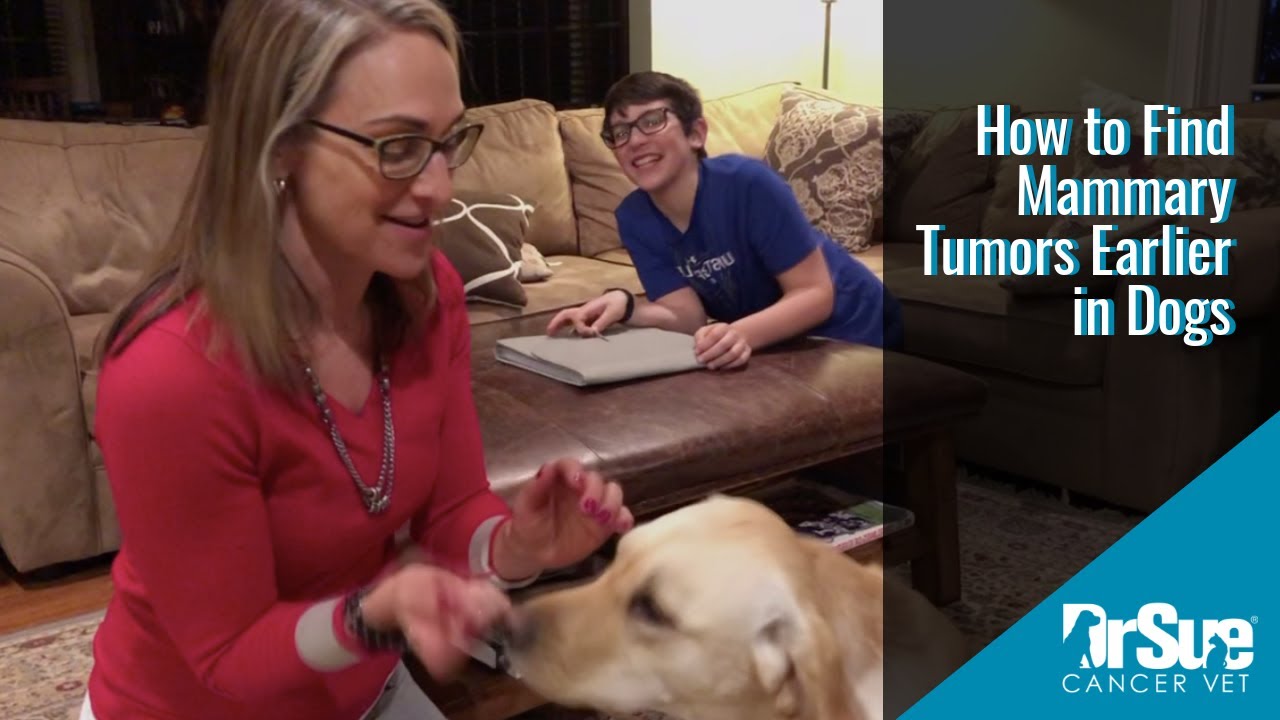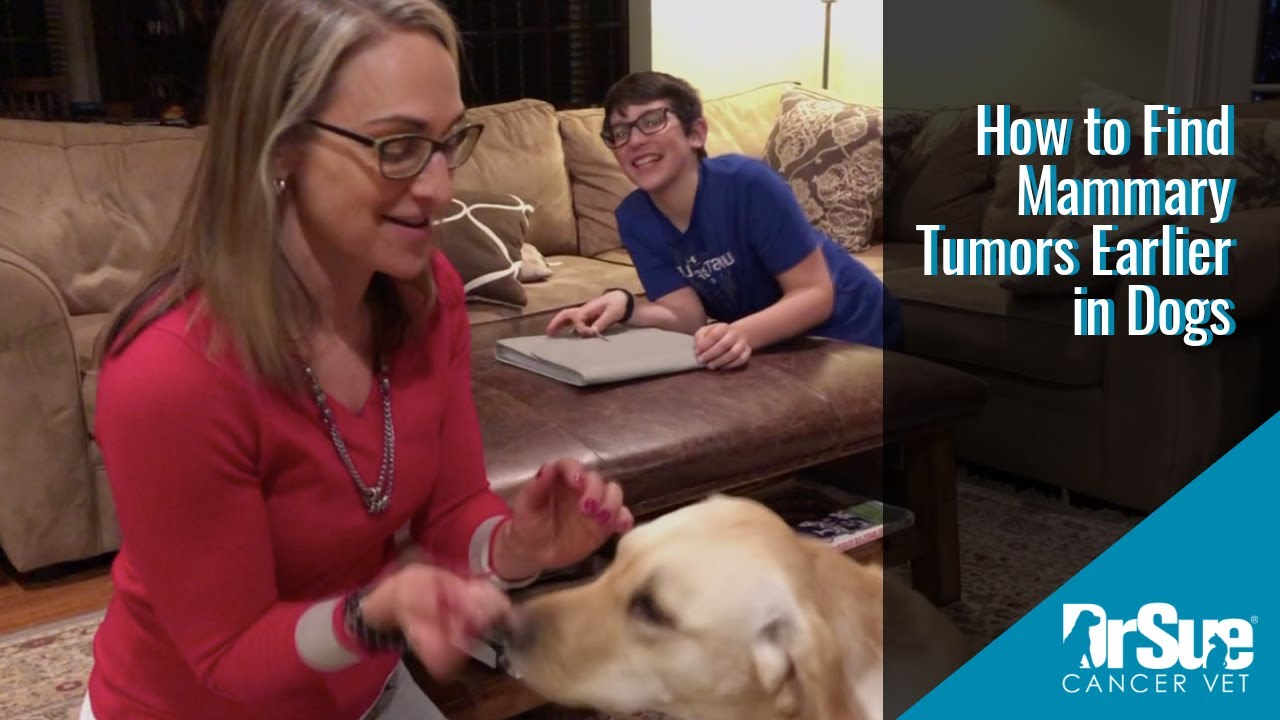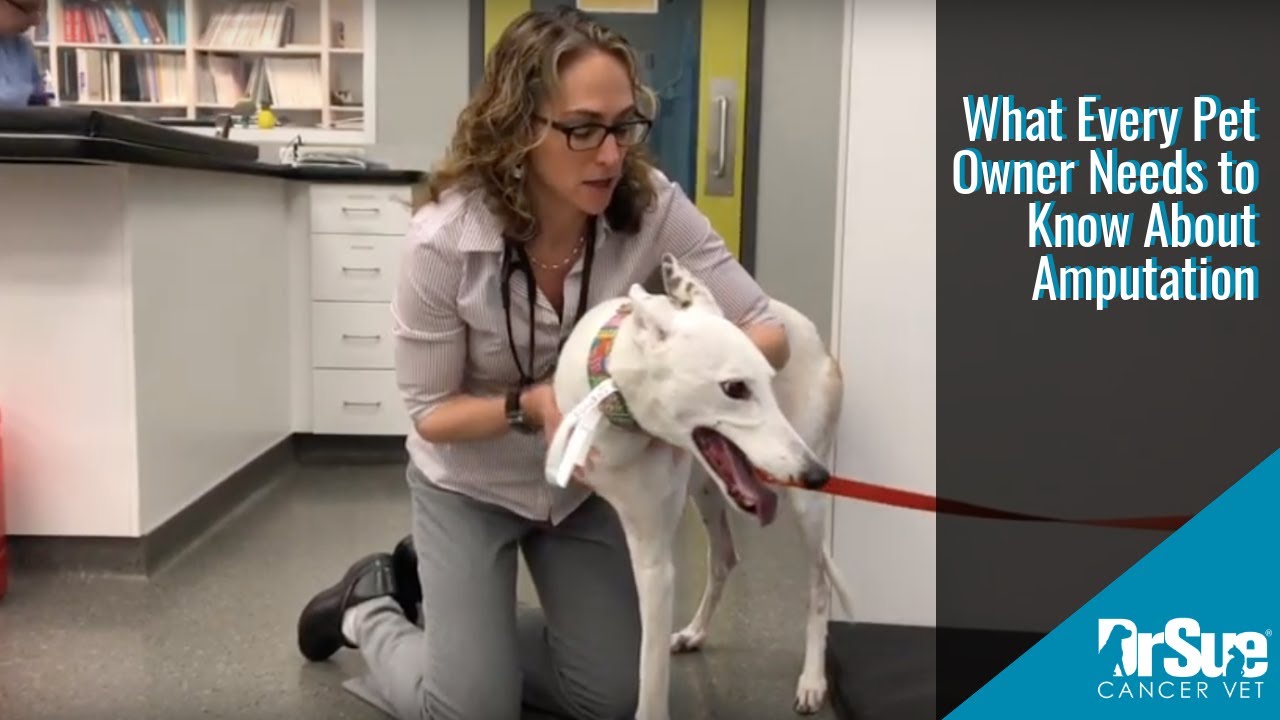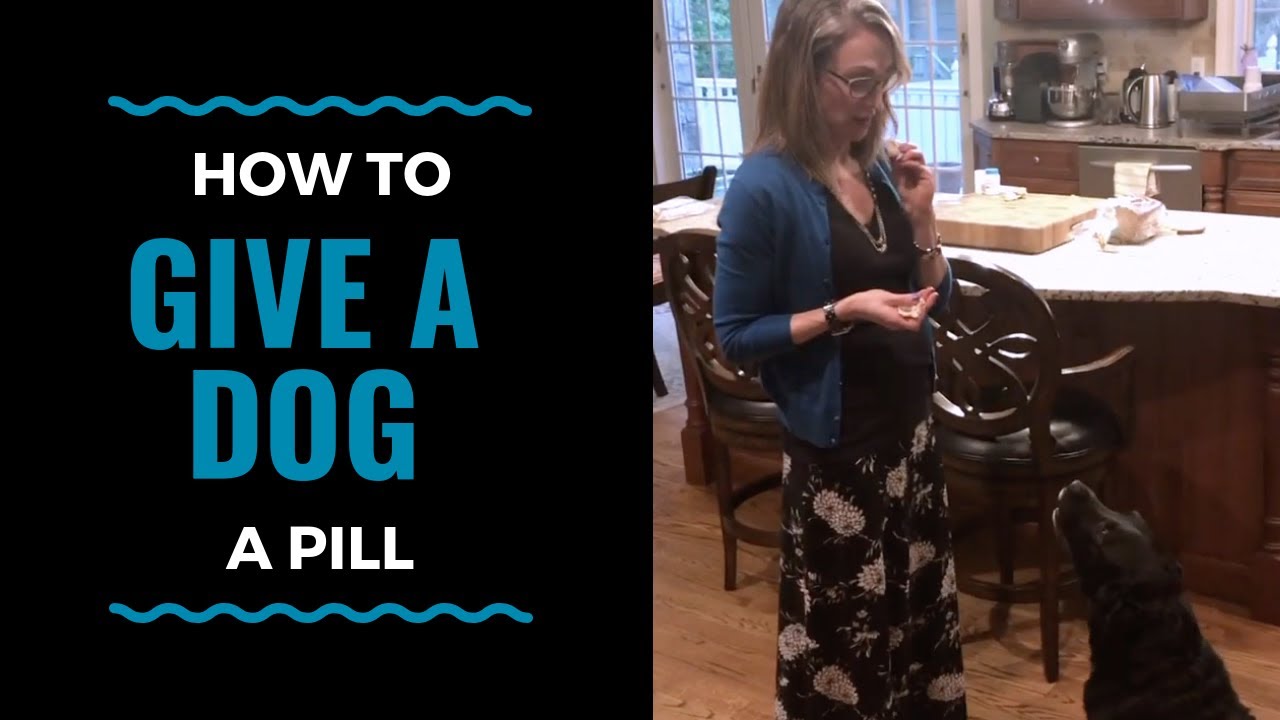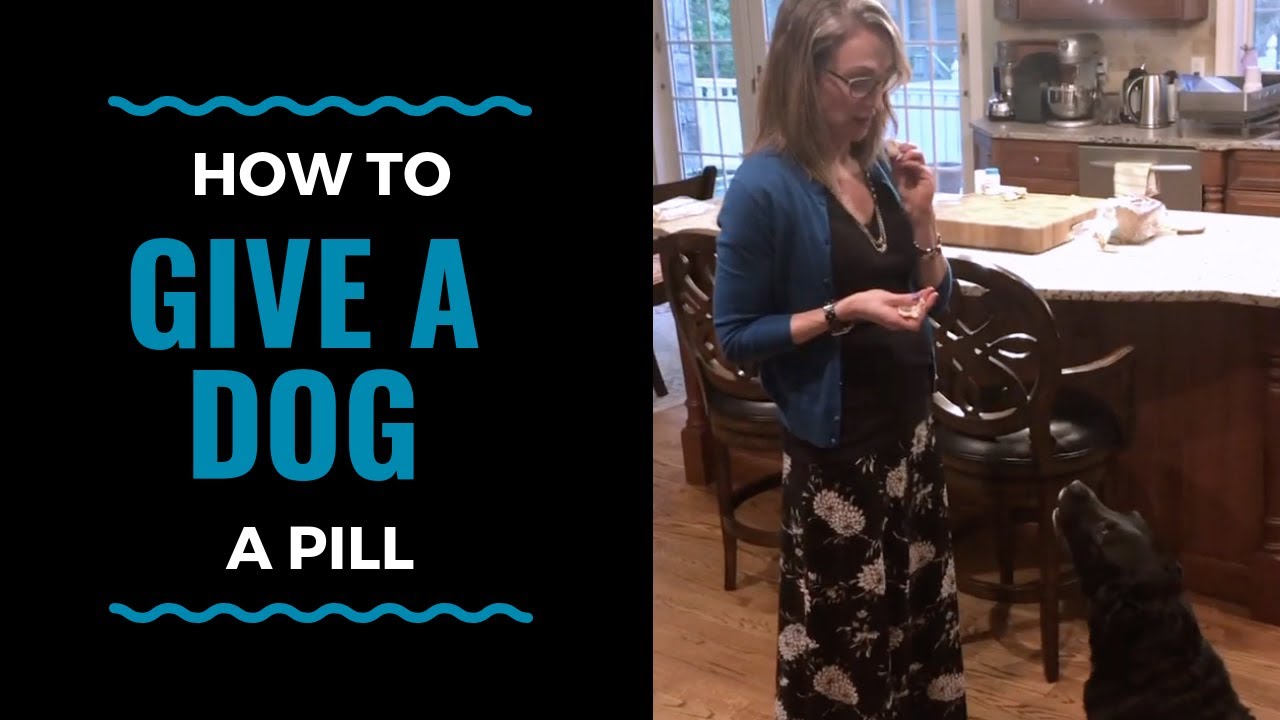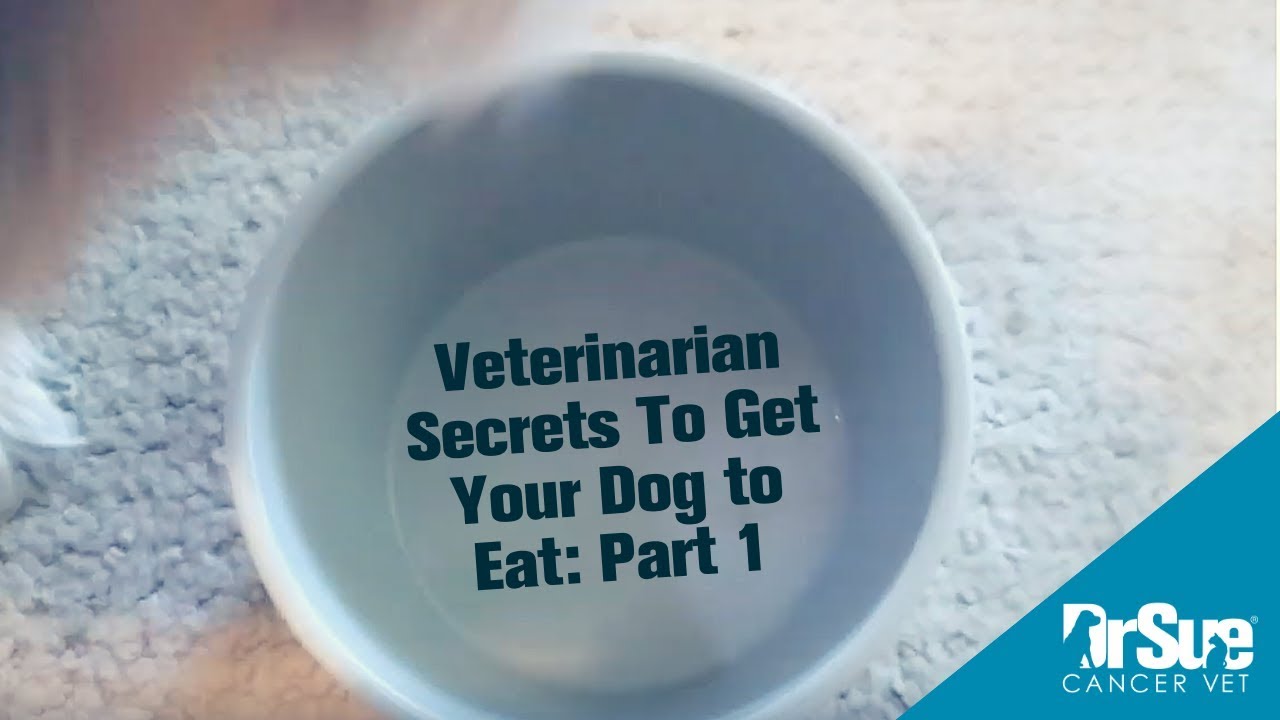In this video, Dr. Sue is back in the clinic checking on her patients. She is especially excited to report on her patient Pokey, who she have been treating for over 2 years. Dr. Sue covers one of the most common questions she gets from pet owners: can you cure lymphoma in dogs? Pokey was diagnosed over 2 years with the most common type of lymphoma that we see and was treated with CHOP chemotherapy and went into remission. She relapsed 4 months after her chemo treatment, which is actually very common in treatment. Dr. Sue explains why she decided to keep her patient on maintenance chemo and describes treatments for her second remission. Watch all the way through to see what Dr. Sue thinks about treatment and remission when it comes to lymphoma. Plus there is Lucy the Great Dane with osteosarcoma and a new kitty patient named Yam with GI lymphoma.
VLOG
How to Detect Cancer Early in Dogs and Cats – VLOG 73
In this vlog Dr. Sue gives you the tips you need to do a monthly lump and bump exam for your dog and cat, explains why we need to find those lumps and bumps, and the tools you need to make it quick and easy!
Early cancer detection is so important– check your dog or cat every month from nose to tail!
Helpful tips for checking your pet:
????Have treats at the ready!
????Try to do the exam while your dog or cat is napping- they’ll never know (or just think it’s a nice massage!)
????Measure any lumps and bumps with a tape measure or calipers (link below)
????Record the location, size and description (Is it raised? Is it hairless? Is it red?) on your skin map (link below).
????Don’t forget to check your pet’s mouth (only if they’ll tolerate it– don’t attempt if your pet doesn’t like it)!
Remember See Something, Do Something. Why Wait? Aspirate.Ⓡ
If there are any new lumps or bumps that are
1️⃣bigger than the size of a pea (1mm) and
2️⃣have been there more than 1 month, go to your veterinarian! Your pet needs an aspirate (a small needle placed to take out cells that can be examined under the microscope).
There is absolutely no other way to know how serious (or hopefully not serious!) that lump or bump is without doing an aspirate. No one, not even a cancer specialist like Dr Sue, can look at a mass or feel a mass, and know what it its.
????Thanks for watching. Please share if you think this will help another pet parent, and don’t forget to subscribe. xo #KickCancersButt#drsuecancervet#veterinaryvlogger#whywaitaspirate
Resources for you:
????Get your free skin maps here: https://drsuecancervet.com/skin-maps/
????Video: How to Find Mammary Tumors Earlier: https://youtu.be/z_Ec2h5ZC-M
????Video: Where Are My Dog’s Lymph Nodes?: https://youtu.be/sQTn4BfqlCg
????Dr. Sue Calipers: https://shop.drsuecancervet.com/ Use the code “DRSUE2019” for 15% off!
Bone Cancer in Dogs What You Need to Know About Osteosarcoma (part 2) – VLOG 72
???? This vlog is part 2 on osteosarcoma and covers treatment options and prognosis. Osteosarcoma treatment in dogs can be complicated and scary, so Dr. Sue discusses treatment options for dogs, including new treatments that will be coming out soon. ????Dr Sue breaks down all the treatment options including surgery, limb-spare surgery, chemotherapy, new immunotherapy, pain control options, and radiation therapy. She will cover the efficacy of the various protocols. ????If your dog has cancer, there are treatment options and for each option, it is important to understand what the benefits and potential cons each option has. ???? To determine the best treatment plan for your dog, it is important to understand all you can about this cancer including prognostic factors and treatment options. ????Osteosarcoma is a treatable cancer. Dogs treated with local therapy and chemotherapy live significantly longer than dogs without treatment and with local therapy only, and chemotherapy is generally well-tolerated in most dogs. #Kickcancersbutt ????Check out vlog 67 which is all about amputation. Miss part 1? Dr Sue covers everything you you need to know when you dealing with osteosarcoma in your dog. (Links below) ???? Helpful links ???? My Osteosarcoma playlist https://www.youtube.com/playlist?list… Amputation – What Every Pet Owner Needs to Know: VLOG 67 https://youtu.be/9nM1gN5iChY Bone Cancer in Dogs What You Need to Know About Osteosarcoma (part 1) VLOG 71 https://youtu.be/D61VsYJeDjE Find a Cancer Specialist https://vetspecialists.com/ http://vetcancersociety.org/pet-owners/ Chemotherapy VLOG https://youtu.be/i2mt2oEgYXs Tripawds Community: https://tripawds.com/ ***Dr Sue’s chemotherapy sheets*** – HELPING A PET THROUGH CHEMO AT HOME: https://drsuecancervet.com/wp-content… – FAQ ABOUT CHEMOTHERAPY IN PETS: https://drsuecancervet.com/wp-content…
Bone Cancer in Dogs What You Need to Know About Osteosarcoma (part 1) – VLOG 71
???? In this vlog, Dr Sue covers everything you need to know when you dealing with osteosarcoma in your dog ????Osteosarcoma is the most common primary canine bone cancer in dogs, and it is locally aggressive and highly metastatic (high spread rate). Dr Sue will address why we need to think about 2 battlefronts when fighting this cancer ????Early diagnostics are key. Which ones do you need to do? And which ones can you skip? ???? To determine the best treatment plan for your dog, it is important to understand all you can about this cancer including who is at risk, what tests to run, prognostic factors, and treatment options. ???? Stay tuned and be sure to subscribe so you can check out part 2 where Dr Sue will break down all the treatment options including chemotherapy, new immunotherapy, pain control options, radiation therapy. She will cover the efficacy of the various protocols. Check out vlog 67 which is all about amputation. (Link below) ????Osteosarcoma is a treatable cancer. Dogs treated with local therapy and chemotherapy live significantly longer than dogs without treatment and with local therapy only, and chemotherapy is generally well-tolerated in most dogs. #Kickcancersbutt
How to Give a Dog a Pill – Vlog 70
????What is the easiest way to give your dog a pill? What foods in your kitchen are most helpful to get those pills down? Here’s how to increase your success of getting medications into your pet. ????Giving oral medications to your pet can be a challenge for many pet parents. Fortunately, pilling a pet is not an impossible task once you learn a few tricks. ????Plus, when your pet absolutely won’t take a pill in food, we show you how to pill your pet. – PLEASE never try to administer a pill forcefully to a dog or cat with a painful mouth or neck. – If your pet is growling or becomes fearful, STOP and abort the pilling mission. – Even if the medication is important for your pet’s health well-being, it is best to use good judgment and avoid getting bit. – Please contact your veterinarian who prescribed the medication for additional recommendations about what to do if you cannot get the medication in.
Veterinarian Secrets To Get Your Dog to Eat: Part 2 – Vlog 69
Nothing is more stressful than when your pet won’t eat. In this video, Dr Sue shares some of her personal experiences with her own pets that would not eat when they were sick. She knows the frustrations of a pet this won’t eat. Inappetence can be quality of life.
She also shares her favorite medications she prescribes to get your pet eating sooner.
Often it takes medications AND the veterinary tricks I showed you in part one. Plus check out successful methods from other pet parents that have worked for their dogs and cats when they stopped eating. https://youtu.be/VOlhyWxPsrk

